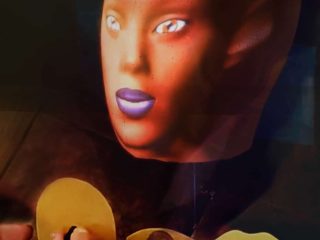Inspired by the “disrobing of Draupadī” from India’s ancient epic, the Mahābhārata, this artefact intends to critique the treatment of women and at-risk people in contemporary India. Situated in a fictional future world using Speculative Design, A Saree like Draupadī’s intends to prompt discussion of this difficult subject in a safer space.
This artefact emerged with the intent of addressing a contentious social issue prevalent in contemporary Indian society in an accessible way that prompted meaningful engagement.
The issue of safety of women and at-risk people in India remains an ongoing, poorly addressed concern in India. Although the roots of this issue might not directly be traced from colonialism, this artefact aspired to create a safer space for conversation through the lens of Indofuturism and a familiar cultural reference. Drawing upon the ancient tale from the culturally significant scripture Mahābhārata, the concept art for A Saree like Draupadī’s was visualised: a future wearable fabric which, just like Draupadī’s saree in the story, self-replicates as it gets unwrapped from the wearer. The wireframe explored the technology and medium for creating and staging it. Two options were explored: a physical installation of cloth drawn from a concealed cloth-roll, draped onto a mannequin, together working as a theatrical setup for an infinite cloth, and a 3D rendition of the fabric in virtual reality that embodies the user’s presence in the virtual space into the interaction.
Construction
The development of this prototype involved some back-and-forth due to the lack of access to fabrication labs, and the difficulty of achieving the ideal characteristics of the fabric in the time available using code. This led to an interesting design challenge of discovering ways to stage to overcome the limitations. The option involving the physical installation was mocked-up using a mini mannequin. The making of this installation required fabrication, which was a challenge to access during to the COVID-19 lockdown. Next, a proof of concept was made in virtual reality using Unity3D (Unity Technologies).
Multiple solutions in the virtual reality scene were engineered, and some discarded, until the final version was decided on. An analogy of a conveyor belt, where the cloth feeds back to its origin cyclically, was adapted into the virtual build: a circular loop of 3D cloth that rotates around its central axis was used to create the illusion of an unending fabric. The rotation was then connected to the triggers on both virtual reality hand controllers using code. Pressing the triggers and moving the controllers enabled the rotation of the looped 3D cloth, creating the intended illusion.
The viewer’s perspective was staged in such a way as to ensure that the illusion of the self-replicating saree was sustained. A dim light setup was used to conceal the elements that were undesirable for effective functioning of the illusion. The sketch of Draupadī Vastraharan from the epic of Mahābhārata was mounted on the mirror of the dressing table besides the viewer in virtual reality. The mannequin was placed in front of the viewer. 3D models of hands were added to the interface by attaching one to each controller of the virtual reality gear.
To highlight the unwrapping motion further, a texture was added to the otherwise unembellished saree.









